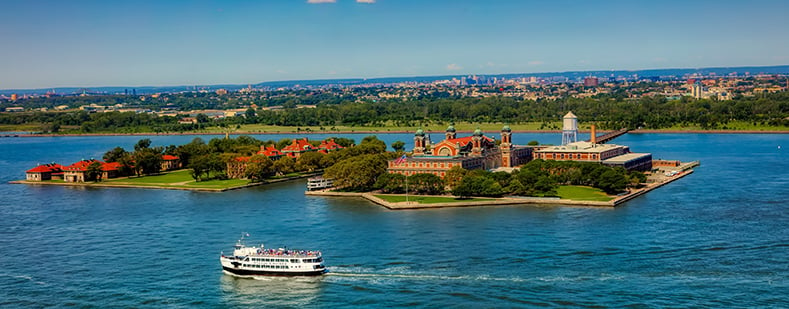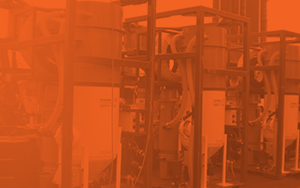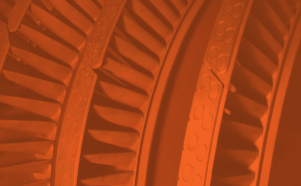The Miss Ellis Island is one of the boats that carries passengers from the New Jersey-based marina across New York Harbor and onto Ellis Island. Getting ready for the busy summer tourist season includes conducting maintenance on the ferries, and this past year, the Miss Ellis Island was due for some much needed recoating on the walkways and decks.
Daniel Gabryszewski and his crew from NJ Reliable Coatings were tasked with the surface preparation and recoating the lower deck of the Miss Ellis Island, but the job did not come without major challenges. The deck's non-skid coating was very well adhered, and over 70 mils (1778µ) thick.
“The existing coating system that was covering the steel substrate was very thick; however, rust was bleeding through. We had to break up the rust in many areas with hammers. We tried to prep the substrate using hand tools and needle guns and neither method was working well to remove the existing coating. We had five guys on the job, it was very labor intensive and very slow-going,” said Gabryszewski.
With the upper deck portion of the project up for bid, Gabryszewski knew that he needed to come up with a better surface prep solution, and this is where Sponge Media™ entered the picture. “We had worked with Sponge Media before and knew that this blasting method would be faster and more efficient than what we were currently doing. We did a demonstration for the client on the lower deck using Sponge Media blasting, and they were very, very impressed. Immediately, they asked us to use the Sponge Media technology on the upper deck of the Miss Ellis Island,” said Gabryszewski.
Double the Work in Half the Time
With the green light to begin the surface prep of the 900ft² (83m²) of the upper deck, Gabryszewski and his crew got to work cleaning the steel substrate to the specified SSPC SP-10 (NACE2) surface cleanliness. “Sponge media also creates an excellent surface profile for coating adhesion,” stated Gabryszewski. This is an extremely important aspect of the job, as once the sponge media blasting was completed, the NJ Reliable Coatings team needed to apply a protective coating system to the deck of the Miss Ellis Island. “We were under a very tight timeline because all prep and coating work needed to be done before a three-day holiday weekend. There really wasn’t room for error on the schedule,” said Gabryszewski.

Three crew members worked for three days on the blasting portion of the job, cutting a week off of the original timeline when hand tools and needle gunning was to be the surface prep method. Using 22 bags of Silver 30 Sponge Media™, and with an estimated removal rate of 100ft² (9m²) per hour, the crew was in a great spot to finish all surface prep work in half of the time and with less manpower.
Low Dust, Little Containment Needed
In addition to the actual speed and efficiency of Sponge Media blasting, there were also a few other factors that allowed the team to complete the surface prep in such a short amount of time. Blasting with Sponge Media creates less dust, eliminating the need for extensive containment to be constructed.
“The containment aspect of the job alone would have been extremely time-consuming and labor intensive had we blasted using another type of media,” explained Gabryszewski. And because sponge media is highly recyclable and environmentally friendly, disposal of the spent media was easy. “We simply walked waste bags off the boat, onto the dock and put them in a dumpster. Disposal was not a big deal and didn’t add to the timeline of the job at all,” said Gabryszewski.
Another advantage to blasting with Sponge Media as opposed to using hand tools, needle guns, and hammers was that the blast process itself was easier on the crew and created less disruption to business as usual in the marina area.
“The vibration, noise and labor intensity of the power tools really wore on the guys. They were physically exhausted and felt like they weren’t getting anywhere despite all of their hard work,” said Gabryszewski. This was not the case with Sponge Media blasting, as the crew was able to quickly progress through the surface prep process with much less physical exertion.









